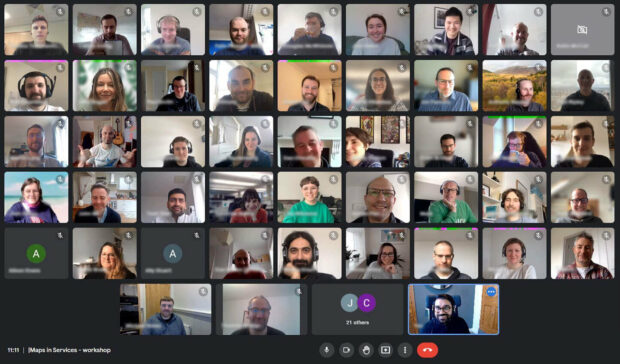The GOV.UK Design System is a contribution-led design system.
Since early on in its development, we've put a lot of focus on making the Design System open for contribution. It’s had some great successes — nowadays, most major additions to the Design System come from outside the team.
After facilitating lots of different contributions and bringing them into the Design System, we’re taking what we’ve learnt and making some changes to the contribution model.
Running some experiments

A few recent bits of work feed into this. Over the last year or so, our community designer has been leading two large-scale collaborations with the community. These involve far more people than in the past, and use co-design approaches to make use of more people’s knowledge and skills. To hear more about this, listen to our podcast about the maps collaboration.
We’ve also been trying a new way of prioritising new work, to make sure we take on the community’s needs and prioritise the most valuable things. Those priorities are listed on our upcoming components and patterns page. Picking up one of these newly-prioritised things gives us an opportunity to trial a new model for contribution.
What we’re proposing
We’ve put together a quick video that gives an overview of how we plan to work:
It's intended as a loose model — each step has a range of possible activities we could run, depending on the thing we’re working on.
We’re not starting completely from scratch. A lot of the model is made of things we already do, rearranged a bit to reflect what we’ve learned over the last few years. For example, the importance of making clear scoping decisions earlier on in the process.
We’ve also left some existing steps untouched. For example, how the working group reviews work. This is so we’re not changing everything at once — we may revisit these things in the future.
If you want to see more detail than what’s in the video, have a look at the journey map we made whilst developing the model.
What we want to achieve
In the past, we often waited for teams to approach us for proposals for patterns and components, which did not always match with the community's needs. The new prioritisation process will change that dynamic: we'll communicate what the next focus is, then ask the community to get involved. Hopefully this means that people are able to share more relevant information, and that their efforts will bear fruit sooner.
We want to take the successes of the community collaborations and make them structurally part of how we work. This means being more intentional about how and when we involve the community. For example, some activities benefit from a larger group, some benefit from a smaller one.
We also want everyone involved to be clear about what’s going on at each point in the process, and how they can contribute. So we’re adding a bit more structure and planning to improve how we communicate.
What’s next
We’ll trial the model when we kick off one of the 3 priorities in the near future. When that happens, we’ll blog about it and let people know via our mailing list.
Facilitating contributions to design systems is hard. Not everything will work. We’ll be taking feedback and iterating as we go.

3 comments
Comment by Geri Reid posted on
Great watch, it's interesting to see your contribution process evolve. Lowering the barrier to contribution is so important. Product teams don't have time to submit a polished, documented component - I feel like contribution criteria I've tried to enforce in the past has been the reason the process has failed. Lots to learn from you folks.
Comment by Ethan posted on
Thank you for sharing this! (One small question: is there a written description of the model available, or is the video overview the only option?)
Comment by Kara Kane - Head of Profession for Design, GDS posted on
Hi Ethan, there is a journey map linked to in the post that supports what the video covers. Hope that helps!